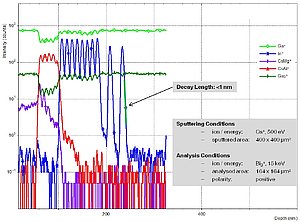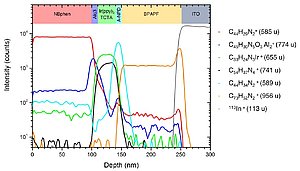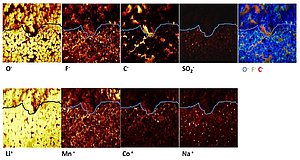Time-of-Flight Secondary Ion Mass Spectrometry (TOF-SIMS): A Success Story for All Kind of Applications in Surface and Interface Analysis
Dr. Markus Terhorst (ION-TOF GmbH, Germany)
Among all types of mass spectrometers used for SIMS, time-of-flight spectrometers have lead to the most versatile instrumentation for all sort of applications in surface and interface analysis. This versatility, in conjunction with a still ongoing and impressive increase in performance has turned TOF-SIMS into the most popular SIMS variation all over the world.
For decades, depth profiling of inorganic materials was the unchallenged domain of magnetic sector and quadrupole SIMS instruments. Today, TOF-SIMS offers impressive performance in this field of application, featuring detection limits down to 1014atoms/cm3 and a depth resolution clearly below 1 nm. Parallel detection of all masses for sure one of the most important advantages of TOF-MS eases the analysis of multi-component samples, "unknowns", and contaminants. In general, the analysis of insulators is more straight-forward than in any other surface analysis technique.
Depth profiling of organic materials by sputter beam techniques was considered impossible until appropriate cluster ion beams became available. Whereas C60 beams were successful under certain conditions and for a few materials only, gas cluster ion beams have opened up this kind of analysis basically for all organic materials, even for cross-linking polymers etc. where other cluster beams such as C60 or SF5 have generally failed.
Progress has also been made in the field of in-situ sample preparation of, e.g., extremely rough, porous, or spongy materials such as Li battery electrodes or fuel cells. Such samples are often difficult to approach by conventional dual-beam depth profiling and the addition of a dedicated FIB (focused ion beam) to the TOF-SIMS technique has proven to be a valuable concept. Sidewall imaging of FIB cuts as well as 3D sample tomography by subsequent FIB preparation and SIMS analysis are routinely performed in modern TOF-SIMS instruments.


